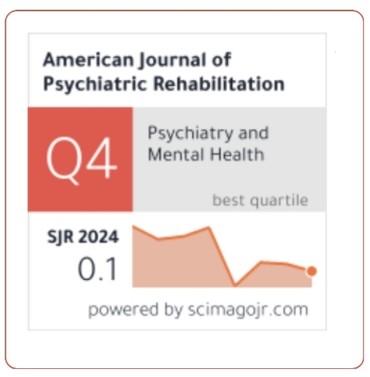Mode Of Action Of Akshi Tarpana – A Critical Review Based On Ayurvedic Principles
DOI:
https://doi.org/10.69980/ajpr.v28i5.716Keywords:
Akshi Tarpana,, Netra Kriyakalpa,, Ayurveda,, Ocular Nourishment.Abstract
Akshi Tarpana is one of the foremost Netra Kriyakalpa procedures described in classical Ayurvedic texts for maintaining ocular health and treating various Netra Rogas. The term Tarpana denotes nourishment and satisfaction of ocular tissues through the retention of medicated Sneha Dravyas (primarily Ghrita or Taila) over the eyes for a prescribed duration. Despite its wide clinical application, the precise mode of action of Akshi Tarpana has not been adequately elaborated in classical or modern literature.The present review critically analyses its mechanism of action on the basis of Ayurvedic principles of Dosha, Dhatu, Srotas, Guna, and Karma. According to Ayurveda, Akshi Tarpana primarily pacifies Vata and Pitta Doshas, which are chiefly responsible for ocular dryness, fatigue, and inflammation. The Sneha Dravyas used in the therapy possess Snigdha, Mridu, Sukshma, and Sara Gunas, which facilitate deep penetration, lubrication, and nourishment of the Drishti Mandala and Netra Srotas. The Rasayana and Chakshushya properties of the medicated Ghrita promote ocular rejuvenation and clarity of vision by enhancing Alochaka Pitta. The mild Swedana (sudation) effect produced during the procedure improves local circulation, removes Srotorodha, and enhances Drishti Poshana.Overall, Akshi Tarpana exerts a soothing, stabilizing, and rejuvenating effect on ocular physiology, corresponding to the Ayurvedic concepts of Indriya Prasadana and Netra Brimhana. Hence, it serves as a holistic ocular therapy that harmonizes Doshas, strengthens Dhatus, and maintains visual acuity. This review provides an integrative conceptual framework for understanding the pharmacodynamic basis of Akshi Tarpana as an ocular rejuvenative therapy.
References
1. Shastri AD. Sushruta Samhita, Sharir Sthana. Ayurved Tatvasandipika commentary. Revised edition. Varanasi: Chaukhamba Sanskrit Sansthan; 2012. p. 1–10.
2. Srikanth N. Ancient ocular therapeutics: An integrated approach. Ayur Medline. 1999;1:93–103.
3. Shastri A. Sushruta Samhita, Uttara Tantra 18/8:94. Varanasi: Chaukhamba Sanskrit Sansthan; reprint edition.
4. Shastri A. Sushruta Samhita of Maharshi Sushruta, Ayurved Tatva Sandipika commentary. Vol. 2. Varanasi: Chaukhamba Sanskrit Sansthan; reprint 2012.
5. Upadhyaya VY. Ashtanga Hridaya of Vagbhata, Vidyotini commentary by Kaviraja Atrideva Gupta. Varanasi: Chaukhamba Prakashan; reprint 2012.
6. Shastri A. Sushruta Samhita, Uttara Tantra 18/13–18. Varanasi: Chaukhamba Sanskrit Sansthan; 2012.
7. Kunte AM. Ashtanga Hridaya, Sutrasthana, Sarvanga Sundara commentary of Arunadatta and Ayurveda Rasayan of Hemadri. Varanasi: Chaukhamba Sanskrit Sansthan; reprint 2010.
8. Kunte AM. Ashtanga Hridaya, Chapter 24:4–6. Varanasi: Chaukhamba Sanskrit Sansthan; 2010.
9. Kunte AM. Ashtanga Hridaya, Chapter 24:308. Varanasi: Chaukhamba Sanskrit Sansthan; 2010.
10. Kunte AM. Ashtanga Hridaya, Chapter 24:9. Varanasi: Chaukhamba Sanskrit Sansthan; 2010.
11. Shastri A. Sushruta Samhita, Uttara Tantra 18/4–7. Varanasi: Chaukhamba Sanskrit Sansthan; 2012.
12. Shastri A. Sushruta Samhita, Uttara Tantra 18/13. Varanasi: Chaukhamba Sanskrit Sansthan; 2012.
13. Mishra S, Raghavan D, Prasad P. Effect of Triphala Ghrita Tarpana in dry eye syndrome: A pilot clinical study. AYU. 2012;33(3):400–404. doi:10.4103/0974-8520.108841.
14. Kumar A, Gupta N. Pharmacological basis of Ghrita preparations in ocular therapy. J Ayurveda Integr Med. 2018;9(4):253–258. doi:10.1016/j.jaim.2017.12.005.
15. Joshi R, Sharma A, Singh P. Clinical evaluation of Triphala Ghrita Tarpana in Shushkakshipaka (Dry Eye Syndrome). AYU. 2014;35(2):179–183. doi:10.4103/0974-8520.146271.
16. Singh S, Kumar P. Integrated ocular pharmacology of Ayurvedic lipid preparations. J Res Ayurveda Pharm. 2019;10(3):50–57. doi:10.7897/2277-4343.100363.
Downloads
Published
Issue
Section
License
Copyright (c) 2025 American Journal of Psychiatric Rehabilitation

This work is licensed under a Creative Commons Attribution 4.0 International License.
This is an Open Access article distributed under the terms of the Creative Commons Attribution 4.0 International License permitting all use, distribution, and reproduction in any medium, provided the work is properly cited.









